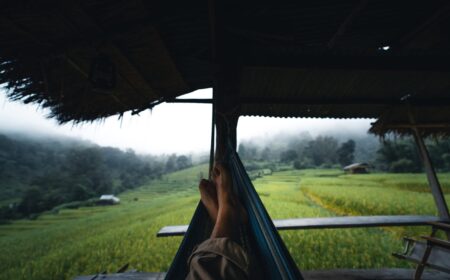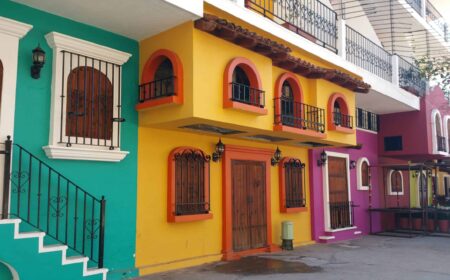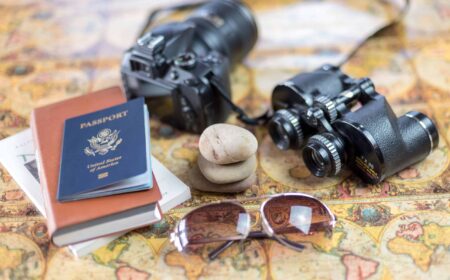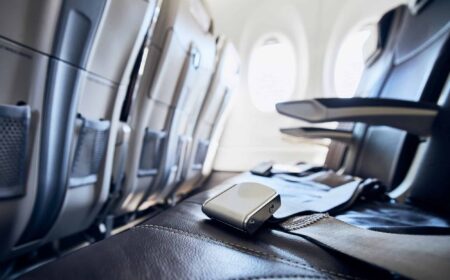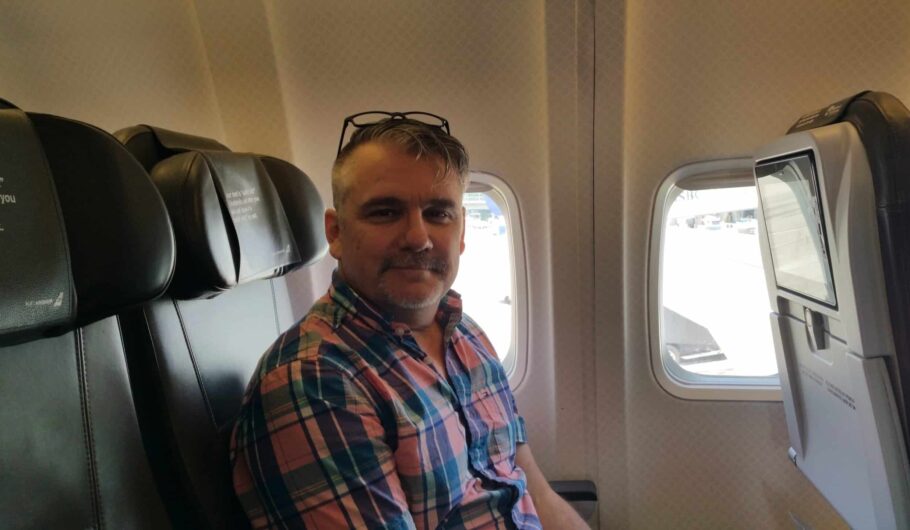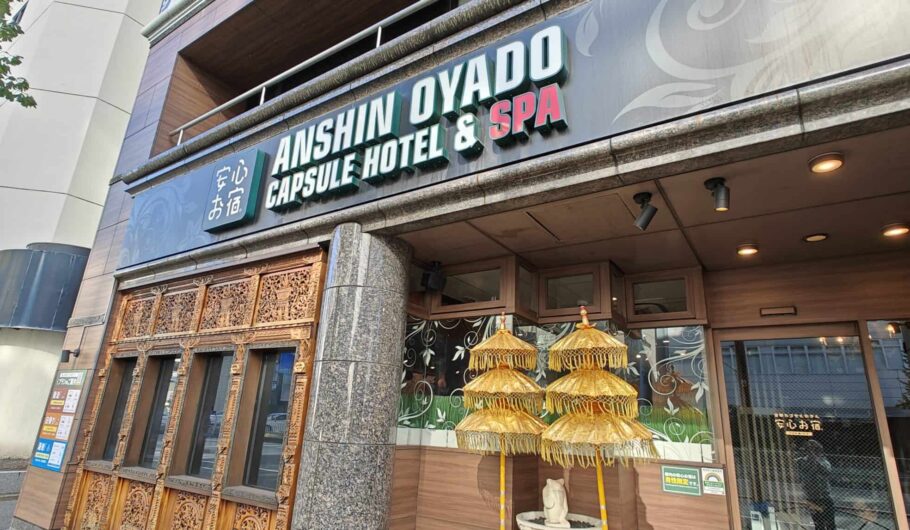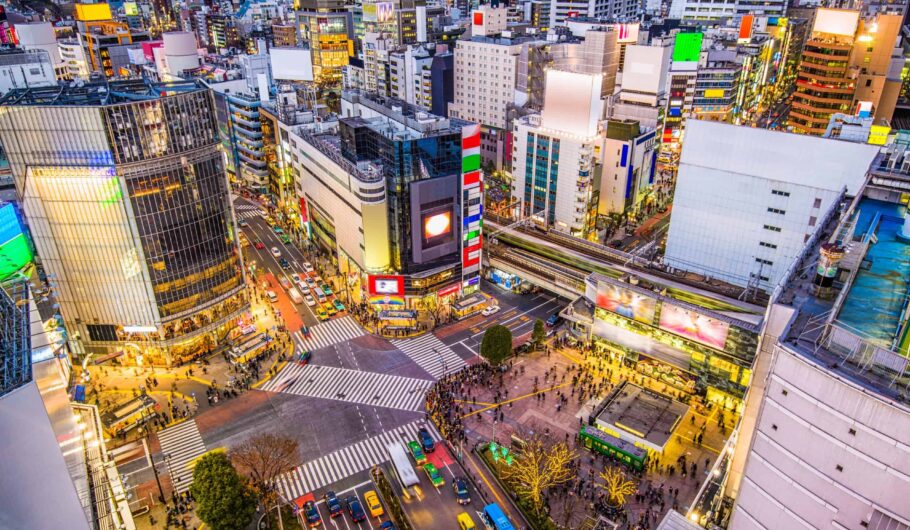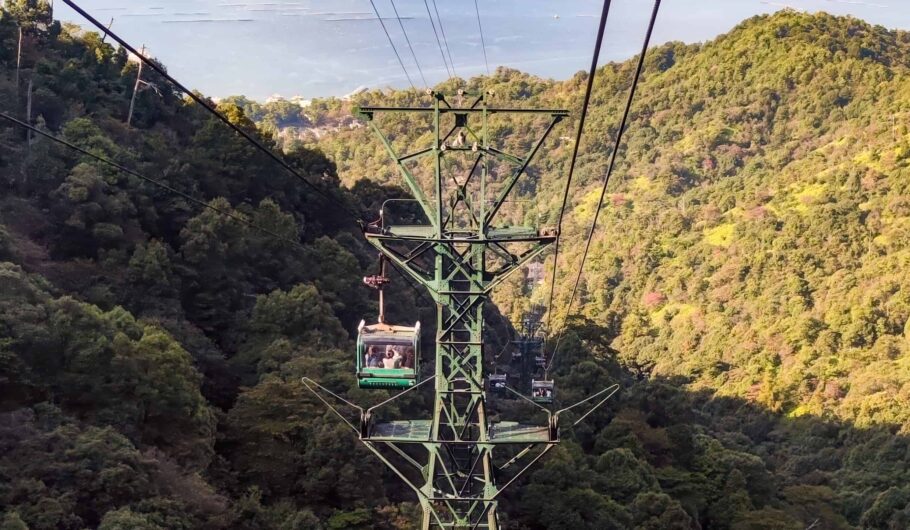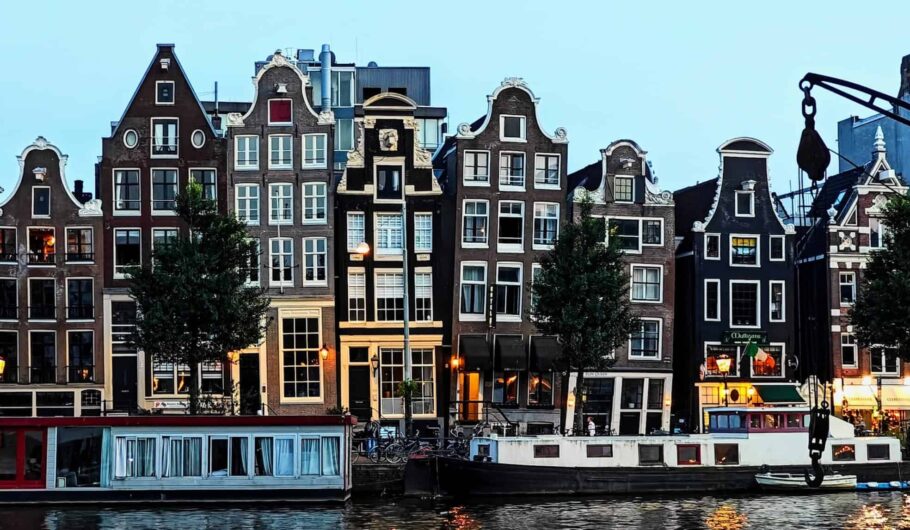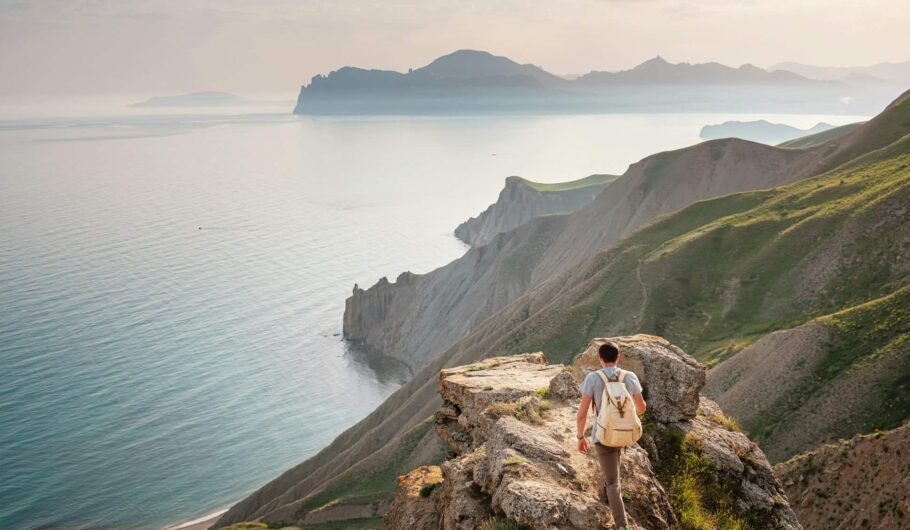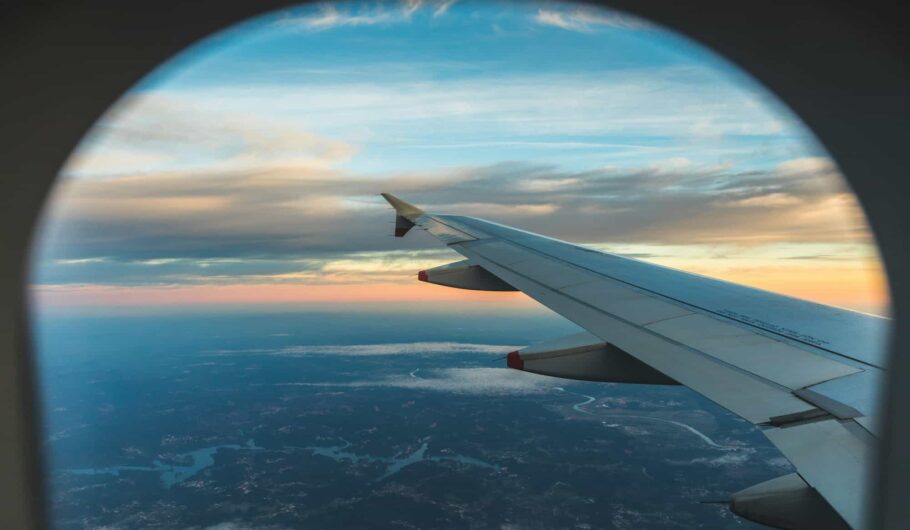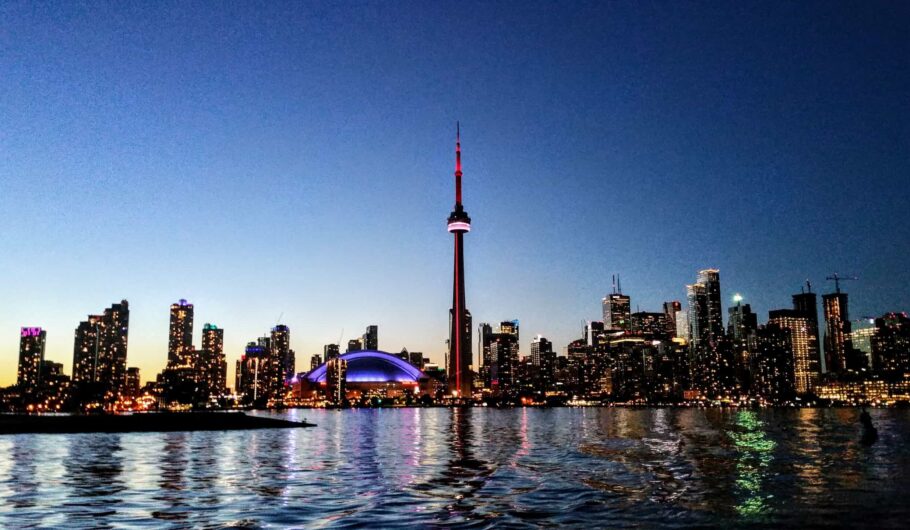How to Live in Toronto Part-Time
Deciding how to balance your life between two places can be rewarding yet challenging. Many people find themselves drawn to vibrant cities like Toronto, renowned for its dynamic culture, diverse food scene, and endless entertainment options. However, the hustle and bustle of urban life can also be overwhelming, leading many to seek solace in quieter locales. The good news? With a part-time living arrangement, you can enjoy the best of both worlds—experience the thrill of city life while retreating to a more peaceful environment. But remember, this arrangement comes at a price.
Toronto is a bustling metropolis teeming with energy and excitement. It boasts a rich cultural scene, offering endless opportunities for exploration, dining, and entertainment. From world-class museums and art galleries to trendy restaurants and vibrant nightlife, there’s always something happening in the city. However, living here full-time can be overwhelming, especially during the harsh winter months. Despite my efforts to embrace the season, my body simply dislikes the chill that grips the city from November to March. If winter activities like skiing or ice skating don’t excite you, spending only part of the year in Toronto allows you to savor it during milder months while escaping to warmer climates when the cold sets in. Imagine enjoying the summer festivals, street fairs, and outdoor patios, then heading south when the snow starts to fall.
Let’s talk about that price tag: the cost of living in Toronto is no joke. Housing prices are among the highest in Canada, and grocery expenses can leave your wallet feeling light. Rent for a decent apartment can consume a significant portion of your income, making it challenging to live comfortably. However, by opting for a more flexible residency—like renting a place part-time or staying with friends—you can enjoy the city’s offerings without being burdened by the financial strain of full-time living. This approach allows you to indulge in urban life while maintaining your financial sanity. You can splurge on experiences like dining out at top-notch restaurants or attending theater performances without feeling guilty about stretching your budget.
While many tout Toronto as a world-class city, I can’t help but feel disheartened by its growing homeless problem. The struggles visible on the streets can overshadow any claims of greatness. As you navigate downtown, it’s impossible to ignore the sight of individuals facing hardships, which can serve as a stark reminder of the inequalities that persist in urban settings. A part-time residency allows you to enjoy the city’s vibrant culture while being mindful of its challenges, allowing for a more balanced perspective on what urban living entails—like a delicious slice of cake with a side of reality check.
There’s also a noticeable tension among residents that can affect your experience of the city. Whether it’s frustration with public services or economic divides, this negativity can be contagious, making day-to-day interactions feel strained. By splitting your time between Toronto and a quieter locale, you can maintain your mental well-being. This setup provides an opportunity to recharge away from the urban hustle while still enjoying those sweet moments in the city—attending concerts, exploring new neighborhoods, or simply soaking up the vibrant atmosphere.
As neighborhoods evolve, many unique areas—like Kensington Market, The Beach, and Greektown—are losing their distinctive character due to rampant development and gentrification. The charming shops, local eateries, and cultural hubs that once defined these neighborhoods are being replaced by high-rise condominiums and chain stores. This arrangement lets you savor what remains of Toronto’s cultural richness while avoiding the frustration of watching beloved communities fade away like a crumbling cake. You can still stroll through these neighborhoods and appreciate their uniqueness without feeling overwhelmed by change.
Safety is another concern for many urban dwellers. Crime rates are on the rise in certain areas of Toronto, leading to increased anxiety about personal safety. Reports of theft or violence can make anyone uneasy about venturing out after dark. Feeling unsafe can be draining, impacting your enjoyment of city life. Being able to retreat to a more secure environment when needed allows you to relish the city’s vibrancy without anxiety ruining your experience. You can explore during the day and return home to a quieter setting at night.
Lastly, the political landscape in Toronto leaves much to be desired. Greed and corruption seem to taint local governance, leading to disillusionment among residents who feel their voices aren’t heard. Issues like inadequate public transport, rising taxes, and lack of affordable housing contribute to frustrations that many grapple with daily. By choosing this lifestyle, you can step back from these frustrations and focus on what you love about the city without letting political issues spoil your dessert. Enjoying art exhibits or attending local events can become a source of joy rather than stress when you aren’t constantly worried about political turmoil.
Ultimately, considering a part-time life in Toronto is about finding balance in your lifestyle choices. It allows you to enjoy all that this exciting city has to offer while mitigating some of its challenges. You get to experience the vibrancy of urban life while also having the space and peace that quieter locales provide. So yes, with travel and the right approach, you really can have your cake and eat it too—just remember that every sweet deal comes at a price.
If you’re interested in exploring this lifestyle further or need tips for managing life between two places, check out our resources on balancing part-time living and maximizing your experiences!
ly can have your cake and eat it too—just remember that every sweet deal comes at a price.
If you’re interested in exploring this lifestyle further or need tips for managing life between two places, check out our resources on balancing part-time living and maximizing your experiences!
Embracing the Daring Journey
As I gracefully (or perhaps not so gracefully) age, like a fine wine—or maybe more like a smelly cheese—I’ve come to deeply appreciate the fleeting nature of time. Life’s journey truly is a precious gift, You see, life truly is a precious gift, one that gets even more precious when the warranty runs out. Each passing year lights a fire under my not-so-youthful behind, igniting a passion to embrace new adventures that push the boundaries of my comfort zone. This epiphany inspired the birth of my travel blog, where I regale my audience with tales of adventure—especially those that involve just me, myself, and I.
Before I became a digital nomad ink-slinging my way through the world, my life was a mix of beats and bass drops as a DJ. Those years were spent spinning tracks, where I turned music into a universal language that connected me with open, albeit probably slightly inebriated, souls on dance floors everywhere. But alas, my hearing began to protest—like a worn-out engine refusing to rev. It was a subtle sign that maybe, just maybe, I should seek new avenues for joy and human connection. Enter: solo travel, my ticket to crafting unforgettable moments that are all mine, sans the logistical—or sometimes hysterical—hiccups of group travel.
Yes, I am indeed a Sagittarius, part of the great wandering pack whose motto is somewhere between “Adventure or Bust” and “Who Needs Directions Anyway?” My cosmic alignment, according to whimsical star charts and the good ol’ Farmer’s Almanac, places me squarely in the camp of wanderers. There’s a magnetic pull that leads me to backpack across continents—or at least consider the prospect from the cozy confines of my couch during a Netflix binge. In all seriousness, solo travel speaks to my independent spirit like a vegan to organic quinoa, allowing me to make my own rules, navigate uncharted cities, and occasionally savage an impromptu karaoke night with strangers who quickly become friends.
For someone like me, longing to escape the routine of a 9-to-5 grind was practically a genetic trait. You could always find me gazing out of office windows, daydreaming about exotic locales while a stack of paperwork sat neglected on my desk. While computers and I share a love-hate relationship—like siblings forced to bond—I realized that spreadsheets pale in comparison to the thrill of a new city. Solo travel grants me that glorious freedom to leap out of the ordinary and embrace the extraordinary, armed with nothing but curiosity and an occasionally questionable sense of direction.
The allure of travel weaves into so many other passions that pile atop my metaphorical suitcase. Photography lets me capture the soul of a place, preserving those blink-and-you’ll-miss-it moments that tell an entire story. Each picture is a postcard-sized time machine, whisking me (and hopefully you, via my blog) back to my adventures. There’s a particular joy—and let’s face it, a bit of pride—in showcasing a snap where I didn’t accidentally capture my thumb or a disgruntled local cat. One standout moment was photographing the bustling souks of Marrakech, where the kaleidoscope of colors and textures seemed to dance before my lens, each frame a vibrant tapestry of life.
Language, too, is my passport. Learning new phrases turns me into a globetrotting polyglot—I aspire to order coffee in at least a dozen different languages, and maybe even a pastry or two. There’s magic in connecting with locals (once they stop laughing at my accent) and diving into the heart of their culture through food and conversation. One unforgettable moment occurred in a small café in Paris, where my hesitant “Un café, s’il vous plaît” earned a warm smile and a delightful story from the barista about her favorite hidden gems in the city. Each dish tells its own tale, and savoring these flavors, from fiery curries to delicate pastries, makes my journey deliciously memorable. Plus, food adventures give me an excuse to keep buying bigger pants.
My hometown, familiar as a pair of old sneakers, slowly lost its charm. Those streets I once roamed became mundane, and I found myself yearning for the unknown, which probably explains why my Google search history is mostly “coolest cafes in Tokyo.” The promise of unfamiliar places, bustling with unique sights, sounds, and smells, adds fuel to my wanderlust-driven fire, keeping my spirit as vibrant as the neon lights of a Tokyo street. One particularly eye-opening moment was standing at the summit of Mount Misen, Miyajima, where the breathtaking views reminded me of just how vast and awe-inspiring the world truly is.
Independence is my formidable sidekick, shaping everything from my travel plans to my breakfast choices. In the arena of solo travel, I get to call the shots—crafting itineraries that balance adventure with leisure (and plenty of snack breaks) while stretching my budget like a mom ensuring leftovers last for days. The thrill of balancing pennies while maximizing experiences gives each journey a flavor of its own—sort of like trying to make a gourmet meal out of ramen noodles. No compromises. Just pure, unadulterated decision-making freedom. One of my proudest budget-friendly victories was navigating Bangkok’s street food scene, where a handful of baht bought me some of the most delicious meals I’ve ever tasted.
And so, my travel blog was born, a digital canvas where I paint the vibrant tales of my adventures. It’s more than just a diary; it’s an invitation for you, dear reader, to accompany me virtually. My hope is that through my anecdotes—from nearly missing flights to accidentally wandering into high-society galas—you’ll be inspired to find your own joy in solo exploration. One post that resonated deeply with my readers was about a serendipitous encounter in a remote village in Bali, where a local family invited me to join their temple ceremony, an experience that left me profoundly moved.
Because, let’s face it, life truly begins at the edge of our comfort zones. Besides, what’s life if you’re not potentially embarrassing yourself in front of an audience of strangers halfway across the globe? Whether you, too, are a solo traveler or simply someone vicariously thrumming with wanderlust, there’s a world of beauty and possibilities waiting. And with each trip, I’m reminded that somewhere out there is a next adventure—just around the corner, in another time zone, eagerly competing for my attention alongside the ever-tempting nap. Here’s to defying the comfort zone and embarking on journeys that are part thrilling, part inspiring, and, undoubtedly, part hilarious.
Champs-Élysées Chronicles
Visiting Paris is always such a treat, but nothing quite compares to my time on the Champs-Élysées. This iconic avenue, buzzing with life and energy, is my favorite spot whenever I’m in the City of Lights. There’s something about the atmosphere that just draws me in, and a few special stops have become traditions for me.
One of my absolute must-visits is the pharmacy near the Arc de Triomphe. But this isn’t your typical drugstore—it’s a hidden gem packed with unique French products you can’t find anywhere else. I love wandering through the aisles, picking up everything from luxurious skincare to tasty snacks. It’s also where I used to indulge in my favorite macarons from Pierre Hermé, but sadly, they’ve replaced it with Ladurée. While Ladurée macarons are lovely, they just don’t quite match the magic of Pierre Hermé’s creations. It’s a little bittersweet, but I still enjoy stopping by.
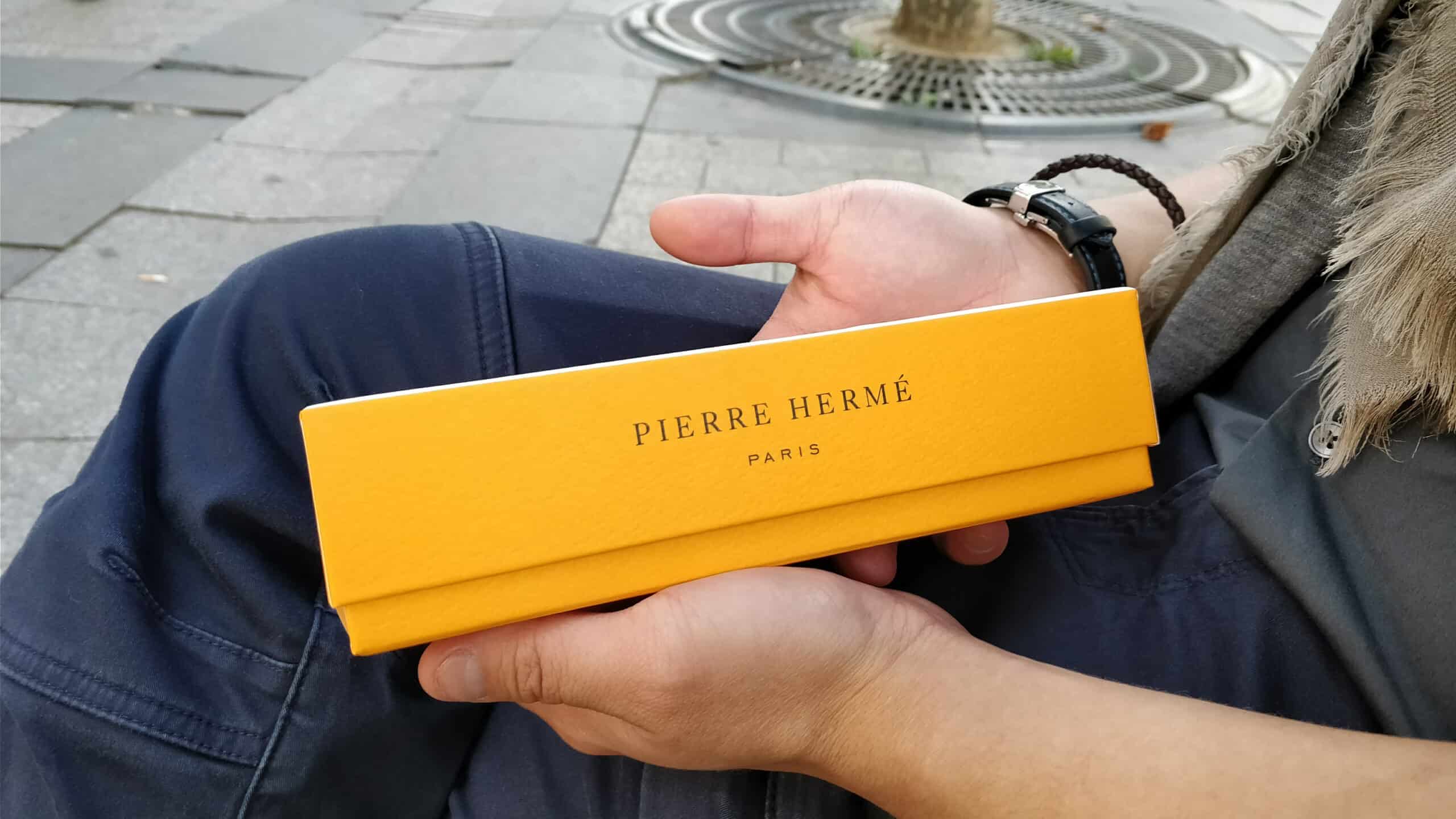
After my pharmacy run, I always make my way to McDonald’s. It might sound funny to go for fast food on such a glamorous street, but hear me out—this McDonald’s is something special. Its sleek, modern design fits perfectly into the Parisian vibe, and the patio seating is amazing. There’s nothing like enjoying a burger and fries outdoors, soaking in the lively atmosphere of the Champs-Élysées. Just a tip: if you want to sit outside, make sure your meal is served on a tray—it’s a little quirk of theirs, but it’s worth it for the experience.
Of course, no visit to the Champs-Élysées would be complete without a stop at the Arc de Triomphe. This stunning monument anchors the avenue and feels like the heart of the area. Beneath it lies the Tomb of the Unknown Soldier, with its eternal flame—a powerful tribute to the lives lost in war. The daily flame-lighting ceremony at 6:30 PM is deeply moving, and every time I witness it, I’m reminded of the history and resilience that make this place so meaningful.
Even though I can’t always splurge at the luxury boutiques along the avenue, window shopping is just as enjoyable. The displays are like works of art, showcasing the latest styles in such an elegant way. I usually like to walk up one side of the street, take in the sights, and then cross over at the Arc de Triomphe to head back down the other side. It’s a simple routine, but it never gets old.
On my last visit, I brought my sister along for the first time. Sharing this place with her was so special. Watching her marvel at the grand architecture, lively cafes, and street performers brought back memories of my first time here. There’s something truly magical about the Champs-Élysées that leaves an impression on everyone.
What makes the Champs-Élysées so remarkable isn’t just its historical significance or the fact that it’s a hub for luxury and culture. It’s the way it blends the grandeur of Paris with the everyday lives of the people who visit and work there. From early mornings when the street is calm and the shopkeepers are just opening their doors, to late evenings when the avenue glows under the city lights, the Champs-Élysées feels alive in a way that’s hard to describe.
During the holiday season, the avenue transforms into a winter wonderland. The trees are adorned with sparkling lights, and the festive atmosphere is truly enchanting. Christmas markets pop up, offering everything from handcrafted gifts to seasonal treats like vin chaud (mulled wine) and roasted chestnuts. On New Year’s Eve, crowds gather to celebrate, and the Arc de Triomphe becomes a backdrop for dazzling light displays. It’s an experience that stays with you long after the season has passed.
Another highlight of the Champs-Élysées is its role as the finish line for the Tour de France. I was lucky enough to witness this iconic event one year, and the energy was electrifying. Fans lined the avenue, cheering on the cyclists as they completed the final stretch of their grueling journey. The excitement, the camaraderie, and the sheer spectacle of it all made for an unforgettable day.
Food lovers will also find plenty to savor here. Beyond McDonald’s, the avenue is home to a variety of restaurants and cafes that cater to all tastes. One of my favorites is Fouquet’s, a legendary brasserie that’s been serving classic French cuisine for over a century. Sitting on the terrace with a plate of escargots or a perfectly cooked steak frites, you can’t help but feel immersed in the Parisian way of life. For a sweet treat, I recommend popping into one of the many patisseries or chocolate shops—you’ll never run out of delicious options to try.
Art and culture enthusiasts will also appreciate the proximity to several museums and theaters. Just a short walk from the Champs-Élysées, you’ll find the Grand Palais and Petit Palais, two stunning exhibition spaces that host everything from contemporary art to historical artifacts. The nearby Théâtre des Champs-Élysées is another gem, offering world-class performances in an elegant setting.
For those looking to escape the hustle and bustle of the avenue, the Jardins des Champs-Élysées provide a peaceful retreat. These gardens, located at the eastern end of the avenue, are perfect for a leisurely stroll or a quiet moment on a park bench. The lush greenery, charming fountains, and picturesque pathways offer a refreshing contrast to the lively energy of the main street.
The Champs-Élysées also holds a special place in the hearts of Parisians and visitors alike for its role in national celebrations. Every July 14th, the avenue becomes the centerpiece of Bastille Day festivities, featuring a grand military parade and an impressive fireworks display. The sense of pride and unity during these events is palpable, making them a must-see if you’re lucky enough to be in Paris at the time.
Despite its reputation for glamour and luxury, the Champs-Élysées is surprisingly accessible. It’s a place where people from all walks of life come together, whether they’re tourists marveling at the sights, locals enjoying a coffee break, or street performers entertaining the crowds. This mix of people and experiences is part of what makes the avenue so unique.
Over the years, the Champs-Élysées has undergone changes to keep up with the times while preserving its historic charm. Efforts to make the avenue more pedestrian-friendly have included widening sidewalks and adding more greenery. These changes have only enhanced its appeal, making it an even more inviting destination for visitors and locals alike.
For me, the Champs-Élysées is more than just a famous avenue—it’s a place where little traditions and big memories come together. Whether it’s savoring a quick snack, exploring unique shops, or simply strolling along its tree-lined sidewalks, every visit feels like a new adventure. I can’t wait to return again, hopefully with more friends and family to share the magic—even if it means settling for macarons that aren’t my number one!
Embracing Minimalism: My Experience in a Capsule Hotel
I recently stayed at a capsule hotel for the first time, and it turned out to be such a unique and memorable experience. Going in, I wasn’t sure what to expect. The concept of staying in a capsule rather than a traditional hotel room felt like stepping into an entirely different world of travel. However, from the moment I arrived, I was pleasantly surprised by how comfortable, well-thought-out, and even cozy it all was.
The check-in process was smooth and straightforward. As someone who appreciates efficiency, I was impressed with how quickly everything was handled. The staff were kind, welcoming, and made sure I understood the layout and rules of the space. They explained everything clearly, from where to store my luggage to how to access the facilities. Speaking of luggage, one of the first things I learned was that you don’t bring your suitcase into the capsule area. Instead, all larger bags are stored in lockers located on another floor. At first, it felt a bit strange to part with my belongings, but it made so much sense once I saw how tidy and clutter-free the sleeping area was. Without suitcases cluttering the hallways, the atmosphere felt more like a serene retreat than a bustling hotel.
When I finally saw my capsule, I was genuinely surprised by how much I liked it. Yes, it was small, but it didn’t feel cramped or suffocating. Instead, it felt like a cozy little nook that was entirely my own. The design was minimalist yet functional, with everything thoughtfully placed for convenience. The lighting was adjustable, allowing me to create the perfect ambiance for reading, relaxing, or winding down before bed. Inside the capsule, there was a small monitor and headphones, which meant I could watch something if I wanted to. The bedding was a standout—it was spotless, soft, and surprisingly luxurious for what I’d assumed would be a more basic setup. Lying there, surrounded by everything I needed within arm’s reach, I couldn’t help but feel like I was in my own little bubble of tranquility.
One of the most pleasant surprises was how peaceful the sleeping area was. Despite being surrounded by other travelers, the entire floor was incredibly quiet. It was clear that everyone respected the shared space, adhering to the unspoken rules of keeping noise to a minimum. The occasional muffled sound from someone adjusting in their capsule or softly closing a door reminded me that I wasn’t completely alone, but it only added to the charm. It felt like being part of a community of travelers, each with their own journey, but all united in the desire for a restful and respectful environment.
The shared bathrooms were another highlight of the stay. They were immaculately clean—honestly, cleaner than some traditional hotels I’ve stayed at. Everything was provided, from high-quality shampoo, conditioner, and body wash to disposable toothbrushes and toothpaste. They even had hairdryers available for use. It was clear that the hotel had thought of every little detail to make guests’ lives easier. I found myself lingering in the bathroom area, appreciating how well-maintained and organized it was. It’s not often that shared facilities leave such a positive impression, but this one truly did.
One of my favorite parts of the entire experience was the artificial onsen located on the top floor. While it didn’t have a view, it didn’t need one. The warm water, soft lighting, and serene atmosphere created the perfect space to unwind. After a long day of exploring the city, soaking in the onsen felt like a slice of heaven. I let my thoughts drift as I sat there, the heat of the water melting away the day’s fatigue. It was one of those moments where time seemed to stand still, and I felt entirely at peace.
Another delightful feature of the hotel was the manga library. Located on a separate floor, it was a cozy space with shelves packed full of titles. Most of the manga was in Japanese, but that didn’t stop me from flipping through the pages and admiring the artwork. It was a fun, unexpected addition that added to the overall charm of the hotel. Even if you’re not fluent in the language, the library offered a quiet place to relax and soak in a bit of Japanese pop culture.
Breakfast at the hotel was another pleasant surprise. I opted for their curry and rice, which turned out to be delicious. It was warm, hearty, and far more satisfying than the quick breakfasts I usually throw together at home. The hotel also offered snacks and drinks throughout the day, which made it easy to grab something on the go without having to leave the building. It was yet another example of how well they catered to their guests’ needs.
The staff truly elevated the experience. They were approachable, friendly, and always ready to help with a smile. Whether I needed assistance navigating the facilities or had questions about local recommendations, they were eager to assist. Their genuine warmth and attentiveness made me feel valued as a guest, which is something I’ll always remember.
One unexpected highlight was the massage chairs in the common area. After hours of walking around the city, sinking into one of those chairs was absolute bliss. The way the chair enveloped me in comfort and worked out the knots in my back felt like a luxury I hadn’t anticipated. It was such a thoughtful addition to the hotel, providing a little extra relaxation after a long day.
Overall, my stay at the capsule hotel was far beyond what I had anticipated. It was affordable, comfortable, and filled with thoughtful touches that made it feel special. The combination of sleek design, impeccable cleanliness, and uniquely Japanese cultural elements created an experience unlike any other. If you’ve ever been curious about staying at a capsule hotel, I wholeheartedly recommend giving it a try. It’s the kind of place that leaves you feeling refreshed, inspired, and perhaps even a little bit more connected to the world around you. Whether you’re a seasoned traveler or just looking for something new, a stay at a capsule hotel is an adventure worth taking.
Shibuya: My Tokyo Love Affair
Shibuya isn’t just a place—it’s a vibe. A chaotic, neon-lit, endlessly fascinating vibe that grabs you by the hand (or your wallet, if you’re shopping) and refuses to let go. It’s one of Tokyo’s most vibrant districts, and honestly, it’s impossible not to fall head over heels for its unique energy.
Take the Shibuya Crossing, for example. This isn’t just a pedestrian crossing; it’s a performance. Hundreds of people streaming in from all directions, perfectly synchronized yet somehow chaotically freeform—it’s like watching a live-action Flash Mob that no one rehearsed for, yet everyone nails anyway. I’ve spent way too much time just standing there, coffee in hand, marveling at the sheer audacity of it all.
Shibuya is basically Tokyo’s Hollywood when it comes to cinematic appearances. Remember Lost in Translation? That melancholic shot of the crossing perfectly captured the beautiful contradiction of being surrounded by a sea of people yet feeling a little lonely. Or Tokyo Drift? Shibuya’s streets were the perfect backdrop for those screeching, gravity-defying car stunts. Let’s be real, though: drifting in Shibuya IRL would probably get you escorted out by the police faster than you can say “vroom.”
Now, let’s talk shopping—because Shibuya is a shopaholic’s paradise. From the ultra-trendy Shibuya 109 (fashion mecca for the style-savvy) to quirky second-hand stores where you can score a vintage kimono and a questionable souvenir T-shirt, the options are endless. Every time I visit, I end up with something I didn’t know I needed—like glow-in-the-dark socks or an overpriced matcha KitKat.
And the food. Oh, the food! Shibuya is basically heaven with extra soy sauce. Ramen joints that warm your soul, sushi so fresh it practically swims off your plate, and dessert cafes that make your Instagram followers drool—it’s all here. Pro tip: don’t leave without trying the fluffy Japanese pancakes. They’re like eating a cloud, but with syrup.
One of my guilty pleasures in Shibuya is people-watching. Just grab a seat near the crossing or at a café and let the parade of life roll by. You’ll see everything from impeccably dressed locals to tourists rocking head-to-toe Uniqlo, with the occasional costumed cosplayer thrown in for good measure. It’s like Netflix, but live and without a subscription fee.
Of course, no visit to Shibuya is complete without stopping by the Hachiko statue. This loyal doggo’s story tugs at my heartstrings every time—though, let’s be honest, most of the crowd gathered there is too busy taking selfies to appreciate the sentiment. Still, it’s a sweet tribute to loyalty, and who doesn’t love a good dog statue?
As night falls, Shibuya becomes a neon wonderland. The streets glow with digital billboards and signs that make you feel like you’ve stepped into the set of Blade Runner—minus the dystopia. Walking through the district at night is a sensory overload in the best way possible. Every corner feels like a postcard waiting to happen.
For anime fans like me, Tsutaya is the holy grail. Their anime collection is unmatched, and I could easily spend hours browsing their shelves. It’s not just a store; it’s a cultural sanctuary where you can geek out over everything from classic Studio Ghibli films to niche manga series. They even host events that make you feel like you’ve stepped into an anime convention—minus the entry fee and questionable cosplay attempts.
And then there’s the sheer joy of wandering Shibuya on foot. The narrow alleys, the quirky shops, the surprise art installations—it’s a treasure hunt where every corner has something cool waiting for you. It’s like the city is whispering, “Keep exploring. There’s more magic here.”
Shibuya isn’t just a district to me—it’s an adventure, a feast for the senses, and a place where every visit feels like the first time. Whether it’s the food, the fashion, or the sheer energy, there’s always something that makes me smile, laugh, or just go, “Wow.” No wonder I keep coming back—it’s impossible to resist the charm of Shibuya!
Getting Lost on the Mountain
Where do I even begin with my trip to Mount Misen? It all start with a one-way ticket on the cable car that would take me halfway up this pretty hill. As I sat in my chair, I was given views that took my breath away—lush trees, far peaks, and the thrill of what was to come. It felt like I was flying in a pretty world, and I couldn’t help but smile at the thought of the trips that lay ahead.
During the ride, I start conversations with some other travelers who was just as eager as I was to see the top. There’s something about shared excitement that makes the journey feel more special, don’t you think? We share stories and travel tips, bonding over our love for trips and the great outside. It was heartwarming to connect with others who understood the thrill of solo travel.
Once I got off from the cable car, I took a moment to enjoy the clean mountain air before keep my walk to the top. The sun was shining bright, and the weather was just perfect—a clear blue sky without a cloud in sight. As I climbed higher, every step took me closer to the awesome views I had seen in many photos. And when I finally reach the top? Wow! The view was simply amazing. I stood there for a few moments, just taking it all in—the wide scenes of greens and blues that seemed to go on forever. This is why I love solo travel; it gives me moments like these that feel so personal and deep.
One of the best parts of my walk was finding the rock formation that I had seen in videos and blogs. It brought a rush of joy to see something so famous in real life! I took a few photos, trying to capture its beauty, but no picture could really do it justice.

As much as I wanted to stay and enjoy the scene, I knew I needed to head back down if I wanted to catch the last cable car at 6 PM. So, with a mix of excitement and a little bit of reluctance, I start my walk back down. However, my excitement quickly changed into worry when I realized that I couldn’t find the path back to the cable car station.
As I walked through the trails, the sun began to go lower in the sky, making long shadows around me. Panic set in a little; I was getting lost. The realization hit me hard—there would be no lights on my walk back down, and I was alone. My legs and knees started to hurt from the uphill climb, and doubt started creeping in.
Just when worry threatened to take over, I heard a familiar sound—the gentle ringing of a temple bell from earlier in my journey. What a relief! That nice sound reminded me of the beauty I had seen that day and gave me hope. Following that sound, I keep moving forward, determined to find my way.
Finally, after what felt like forever of wandering, I saw other people nearby! Seeing them filled me with new energy and determination. With each step toward them, the darkness began to lift—both literally and figuratively. I made it back before it was completely dark, and let me tell you, there was nothing more comforting than seeing lights in the distance.
This walk challenged me in ways I didn’t expect, but it also reminded me of why I love solo trips so much. It’s not just about reaching the top; it’s about overcoming problems and enjoying every moment along the way. My journey to Mount Misen was an unforgettable trip filled with awesome views and a bit of an adrenaline rush as well. Here’s to more trips—hopefully with fewer wrong turns next time!
Your Guide to Permit-Free Travel in Europe
The UK will mandate European Union nationals to acquire an Electronic Travel Authorisation (ETA) beginning on April 2, 2025, for entry. Conversely, travelers from the United States are already subject to this requirement for UK visits. While many individuals wishing to journey to the UK may need a visa, the necessity largely hinges upon their nationality and the intended nature of their stay. At present, EU nationals are typically exempt from needing visas for brief visits, though this status is set to change with the ETA rollout by mid-2025.
Meanwhile, in the Balkans, countries such as Albania, Bosnia and Herzegovina, and North Macedonia provide visa-free entry to EU citizens; however, the regulations for other non-EU passport holders remain unclear. Additionally, these Balkan nations will demand an ETIAS travel authorization from EU nationals starting in 2024, which marks a shift from their previous policy of allowing short-term visits without a permit.
Kosovo extends visa-free access to EU citizens, as well as American and Australian travelers; however, this does not extend uniformly to all nationalities. It’s crucial to note that not all EU citizens are exempt from visa requirements for Kosovo. Regulations may vary depending on an individual’s nationality and specific circumstances.
Monaco, while closely aligned with France, is not classified as part of the Schengen Area; it operates under its Schengen Visa policy due to a customs union with France. Similarly, Vatican City is often seen as outside the Schengen Zone, and travelers holding a valid Schengen visa should verify specific entry conditions even though they typically encounter no passport checks when entering from Italy. Yet, entry to Vatican City may require particular permits or tickets for certain sites, and simply having visitors already in Italy does not exempt one from these regulations when entering Vatican City. Thus, visitors must comply with Schengen area entry protocols, including visa necessities based on their nationality.
Exploring Europe is truly a remarkable experience. The rich array of cultures, fascinating history, and enchanting languages contribute to an unforgettable journey. However, the planning process often brings forth the inevitable query: “Will I need a visa?” Thankfully, numerous destinations in Europe allow travelers to bypass cumbersome paperwork, letting them immerse themselves in the adventure. Let’s dive into which places you can visit without the hassle of obtaining permits.
As of April 2, 2025, EU nationals will need to apply for an ETA for entering the UK, aligning with the requirements already in place for US tourists. While many travelers may currently not need a visa for brief stays in the UK based on their nationality and purpose, this will shift with the implementation of the ETA by mid-2025.
In the Balkans, countries such as Albania, Bosnia and Herzegovina, and North Macedonia permit EU citizens to enter without a visa, yet the visa status for other non-EU passport holders remains vague. Additionally, these Balkan states will require an ETIAS travel authorization for EU travelers starting in 2024, despite having previously allowed permit-free stays.
Kosovo allows certain travelers, including EU citizens, Americans, and Australians, to enter without a visa; however, this does not extend universally to all nationalities, as some EU citizens may still find themselves needing a visa.
While Monaco operates under the Schengen Visa policy due to its customs union with France, it does not belong to the Schengen Area itself. Likewise, Vatican City, which is generally outside the Schengen framework, requires specific entries and tickets for visiting certain sites. Even though travel from Italy typically has no passport checks, visitors must comply with Schengen entry regulations, possibly necessitating a visa based on their nationality.
The Schengen Area truly opens up a world of possibilities for travelers. Once you step inside, moving from one country to another becomes a seamless experience, free from the hassle of border checks. Picture yourself enjoying a stroll in Paris one day and then relaxing with a cup of coffee in Vienna the very next day, all without the need for extra paperwork. Although you may still be required to present your passport or ID from time to time, the worry over obtaining permits is significantly reduced.
This enchanting region comprises nations such as Austria, Belgium, the Czech Republic, Denmark, Estonia, Finland, France, Germany, Greece, Hungary, Iceland, Italy, Latvia, Lithuania, Luxembourg, Malta, the Netherlands, Norway, Poland, Portugal, Slovakia, Slovenia, Spain, Sweden, and Switzerland. Travelers hailing from the EU/EEA, the United States, Canada, Australia, Japan, or South Korea can visit these countries visa-free for stays of up to 90 days within a 180-day timeframe. However, for individuals from countries like India, China, or Brazil, a Schengen visa may be required, although certain exemptions may apply. As of mid-2025, EU nationals will need to obtain an ETA for visiting the UK, shifting from the current exempt status for short stays. It’s also pertinent to mention that while some Balkan nations like Albania, Bosnia and Herzegovina, and North Macedonia have previously allowed visa-free entry, they will introduce ETIAS travel authorizations for EU citizens starting in 2024.
Let’s delve into the travel policies of the UK and Ireland. Although neither is included in the Schengen Area, they remain quite inviting to visitors. Currently, the UK permits numerous travelers—such as EU nationals, U.S. tourists, and individuals from multiple other nations—to enter without a visa. Meanwhile, Ireland operates within the framework of the Common Travel Area (CTA) and maintains its own set of rules, making it accessible for many travelers as well. However, it is important to be aware that travel regulations have evolved since Brexit, so if you’re traveling from outside the EU or any other exempt nations, it’s wise to verify the latest guidelines. Starting from 2 April 2025, EU nationals will need to apply for an ETA to visit the UK, similar to the existing requirement for U.S. visitors. So, make sure to stay updated on these changes!
Considering a trip to the Balkans? You’re in for a treat! Albania, Bosnia and Herzegovina, and North Macedonia are welcoming destinations for travelers. These countries currently provide permit-free entry for EU citizens and several other nationalities, including Americans, allowing stays of up to 90 days. You’ll be captivated by stunning landscapes, vibrant culture, and the warmth of the locals. However, it’s worth noting that while EU nationals enjoy ease of access now, the forthcoming changes like the requirement for ETIAS travel authorization starting in 2024 will alter the landscape slightly. Plan accordingly to make the most of your journey!
Kosovo may not be a top destination for all travelers, but it deserves consideration. Despite its complex political situation, this country is known for its warm hospitality. EU citizens, Americans, and Australians are generally permitted to enter without a visa, although some EU nationals may face specific visa requirements. Featuring a rich blend of history, culture, and stunning landscapes, Kosovo certainly merits inclusion on your travel plans.
For an experience steeped in elegance, make your way to Monaco. This petite principality nestled along the French Riviera epitomizes opulence, and the cherry on top? While it’s closely connected to France and follows the Schengen Visa policy, Monaco isn’t officially part of the Schengen Area, meaning specific visa requirements may still apply based on your nationality. Most travelers find their route to Monaco through France, seamlessly integrating it into their European sojourn. Whether you’re indulging in its world-renowned casinos or simply enjoying the coastal atmosphere, this destination is certainly worth your itinerary.
San Marino and Vatican City are two small yet significant places located within Italy. They make for an ideal day trip, showcasing a distinctive mix of history and culture. Vatican City, recognized as the smallest nation globally, is completely encircled by Rome and typically does not mandate additional permits for those already in Italy. Similarly, visiting San Marino is uncomplicated—travelers do not need any supplementary documentation to enjoy its breathtaking medieval allure.
Nestled in the mountains between France and Spain, Andorra is another lesser-known treasure waiting to be explored. While it isn’t an EU member, getting there from either France or Spain is a breeze. Renowned for its stunning alpine scenery and tax-exempt shopping, Andorra attracts tourists in search of unique experiences away from the usual tourist spots.
Certainly! Although Europe presents numerous opportunities for visa-free travel, it’s important to remain informed about any updates. Certain nations may have particular stipulations, such as health declarations, travel insurance, or evidence of return tickets. If your travel plans include destinations like Serbia, Montenegro, or Turkey, know that they typically permit short stays without a visa, but verifying the requirements beforehand is always wise. Additionally, as of 2 April 2025, EU nationals will need to apply for an ETA to travel to the UK, contrasting with the current visa regulations for U.S. tourists who already need one. Keep these changes in mind as you plan your journeys.
Thinking about embarking on a European escapade? The great news is that the continent offers fantastic accessibility for travelers. From meandering through the opulent avenues of Monaco to trekking in the breathtaking landscapes of the Balkans, or exploring the rich history of Vatican City, numerous destinations are at your fingertips. However, do keep in mind that some locations may require additional documentation or travel authorizations, so be sure to check any visa requirements according to your nationality before you go.
Get your bags ready, review the current entry regulations specific to your nationality, and prepare yourself for an amazing adventure across Europe. Wishing you safe and enjoyable travels!
How to Meet People While Traveling Alone
Traveling alone offers a unique opportunity for self-discovery and adventure. However, the journey can sometimes feel isolating without the companionship of friends or family. Fortunately, there are numerous strategies to help solo travelers connect with others and forge meaningful relationships on the road.
Opting for accommodations that encourage social interaction can significantly enhance your chances of meeting fellow travelers. Hostels are renowned for their communal atmosphere, offering shared dormitories and common areas where guests can easily interact. Many hostels organize events like group dinners, pub crawls, or city tours, providing structured opportunities to socialize. Engaging in these activities can lead to lasting friendships and shared travel experiences. Staying with local families through homestays offers a deep dive into the culture and daily life of your destination. Hosts often introduce guests to their social circles, allowing for authentic connections with locals. This immersive experience can lead to meaningful relationships and a better understanding of the local way of life.
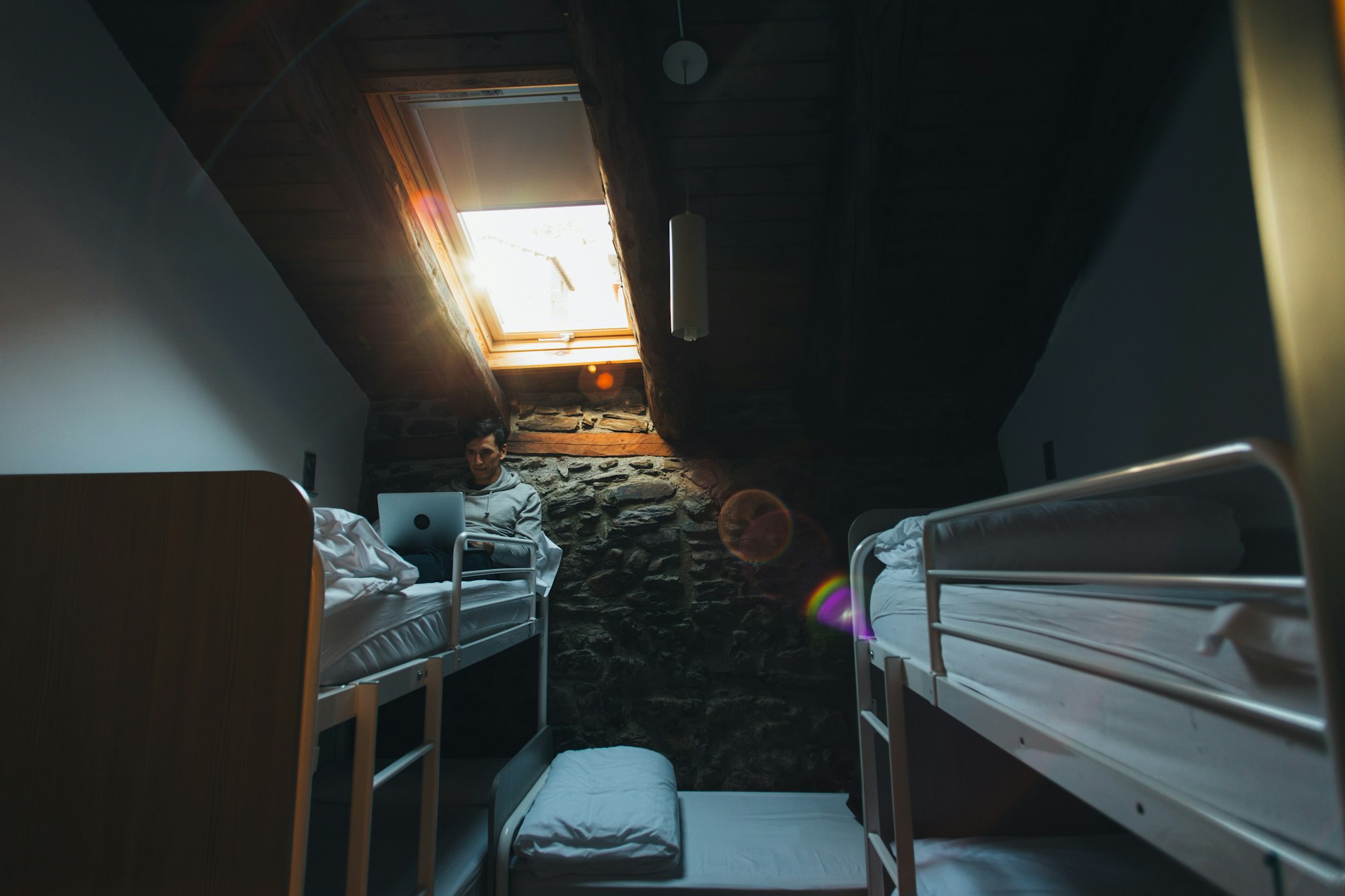
Engaging in group activities aligned with your interests can be a gateway to meeting like-minded individuals. Joining guided tours—be it walking tours, food tastings, or adventure excursions—places you in the company of fellow travelers with similar interests. These shared experiences naturally foster conversation and camaraderie. For instance, participating in a group tour of a local market or historical site can lead to discussions and connections with others. Enrolling in local classes, such as cooking, dance, or art, allows you to learn new skills while interacting with others. These settings encourage collaboration and provide a relaxed environment for forming connections. For example, taking a traditional cooking class can lead to bonding over shared culinary creations.
In the digital age, numerous platforms are designed to connect travelers. Applications like Bumble BFF and Gofrendly are specifically designed to help individuals make friends in new places. By creating a profile and indicating your interests, you can connect with locals or fellow travelers seeking companionship. These platforms have been instrumental in forming meaningful friendships, especially for those in their 20s and beyond. Online groups and forums, such as Facebook groups dedicated to solo travelers or specific destinations, offer opportunities to arrange meetups and share experiences. Engaging with these communities before and during your trip can provide valuable connections and advice.
Immersing yourself in local events can lead to organic interactions with both residents and fellow travelers. Attending local festivals, art exhibitions, or concerts allows you to experience the culture firsthand while mingling with others. These events provide natural conversation starters and shared experiences that can lead to friendships. For instance, participating in a local music festival can lead to dancing and interacting with others who share your musical interests. Engaging in community activities, such as local markets or public celebrations, offers opportunities to meet locals and learn about their way of life. These interactions can provide deeper insights into the culture and foster meaningful connections.
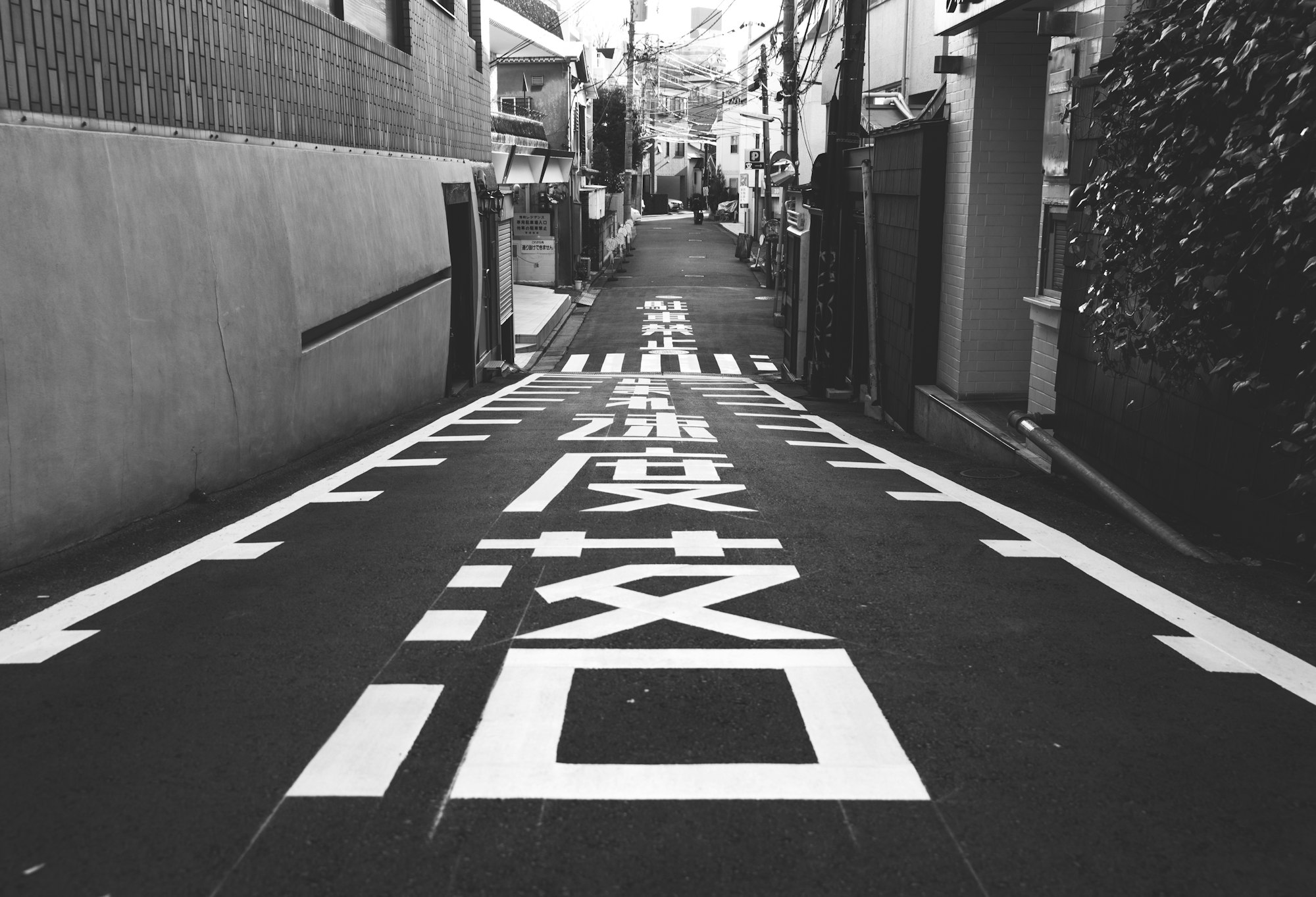
Contributing your time to local causes not only benefits the community but also introduces you to individuals who share your values. Many destinations have organizations that welcome the assistance of travelers. Whether it’s teaching English, participating in environmental conservation, or assisting at community centers, volunteering can lead to profound connections with both locals and fellow volunteers. For example, joining a beach cleanup initiative can connect you with environmentally conscious individuals.
Your demeanor plays a crucial role in attracting social interactions. Maintaining open body language, such as uncrossed arms and making eye contact, signals that you are approachable. A friendly smile can invite others to initiate conversation. Being mindful of your non-verbal cues can make a significant difference in how others perceive you. Don’t hesitate to start a dialogue with someone nearby, whether it’s a fellow traveler at a café or a local in a park. Simple icebreakers, like asking for recommendations or commenting on a shared experience, can lead to meaningful interactions. For instance, complimenting someone on their choice of book or asking about the dish they’re enjoying can spark a conversation.
Engaging with online platforms can set the stage for in-person meetings during your travels. Numerous groups cater to solo travelers, digital nomads, or specific destinations. By joining these groups, you can connect with others who will be in the same area, share tips, and even plan meetups. For example, groups like “Solo Female Traveler Network” offer meetup options for members in various locations. Subreddits focused on travel, such as r/solotravel, provide platforms to discuss plans, seek advice, and arrange meetups with fellow travelers. Engaging in these discussions can lead to valuable connections and insights.
Joining local fitness activities can be both a health benefit and a social opportunity. Participating in yoga or dance classes allows you to meet individuals who share an interest in wellness. These classes often have a communal atmosphere, making it easier to strike up conversations. For instance, attending a morning yoga session in a park can lead to post-class chats with fellow participants. Engaging in group sports, such as soccer, basketball, or running clubs, provides a team environment where camaraderie develops naturally. Joining a local running group for a morning jog can introduce you to fitness enthusiasts and offer a shared experience to bond over.
Exploring local cafes and bookstores can be a relaxed way to meet people. Spending time in these venues allows for casual interactions with locals and fellow travelers. Striking up a conversation about a book or the local coffee blend can lead to meaningful exchanges. For example, asking a fellow patron for a book recommendation can open the door to a deeper discussion. Participating in events like book readings, poetry nights, or open mic sessions at cafes and bookstores can introduce you to individuals with similar interests. Engaging in a discussion about a poem or performance can foster connections with like-minded individuals.
Staying in touch with the people you meet ensures that initial encounters develop into lasting friendships. Exchanging contact information, such as social media profiles or email addresses, allows for continued communication after the initial meeting. Sending a follow-up message expressing enjoyment of your meeting can reinforce the connection. Sharing experiences, photos, or travel plans through social media keeps the relationship active and opens opportunities for future meetups. Commenting on each other’s posts or sharing travel tips can maintain the bond over time.
Traveling alone doesn’t have to mean being lonely. By staying in social accommodations, participating in group activities, utilizing digital platforms, attending local events, volunteering, being approachable, engaging in online communities, joining fitness classes, exploring local venues, and maintaining connections, you can meet new people and create lasting friendships on your journey. Embrace the adventure of meeting new friends while exploring the world; you never know what incredible connections await you!
There’s a new President (ugh) What does this mean for travelers
The implications of Donald Trump’s second term for travelers are multifaceted and can be broken down into several key areas:
Visa Policies and International Travel
Trump’s second term is likely to see a return to more restrictive visa policies, similar to those implemented during his first term. This includes:
- Travel Bans: Trump has indicated he may reinstate travel bans for citizens of certain countries, including those from Muslim-majority nations and other regions such as Iran, Iraq, Libya, Somalia, Sudan, Syria, and Yemen. New restrictions could also be imposed on additional countries.
- Increased Screening: “Extreme vetting” policies are expected, involving more intensive biometrics requirements, background checks, and security screenings. This could result in longer wait times for visas and higher rates of denials.
Immigration and Entry Processes
- Enhanced Security Measures: Foreign nationals can expect more stringent security screening and vetting processes, which may delay their entry into the United States and complicate the process of obtaining immigration benefits.
- Impact on Business Travel: Employers may face increased hurdles in accessing foreign talent due to more procedural requirements, slower processing times, and higher rates of case denials. This could affect the entry, onboarding, and resumption of employment for sponsored foreign workers.
Climate and Environmental Policies
- Rollback of Sustainability Initiatives: Trump’s administration is expected to reverse many of the climate and environmental policies implemented by the Biden administration. This could include rolling back incentives for sustainable aviation fuel and other green travel solutions, potentially slowing the industry’s progress toward sustainability.
- Deregulation: A more permissive approach to environmental regulation is anticipated, which could benefit companies by reducing compliance costs but may stall environmental progress.
Infrastructure and Travel Infrastructure
- Uncertainty in Infrastructure Spending: While Trump has historically supported infrastructure projects, his second term might see a pivot away from large-scale spending initiatives. This could delay projects aimed at modernizing airports, roadways, and public transportation systems, affecting the overall travel experience.
- Impact on Airports and Transportation: The potential reduction in infrastructure funding could slow down projects designed to ease congestion and modernize travel hubs, affecting airlines, hotels, and transportation services.
Consumer Protection and Regulatory Environment
- Less Regulatory Scrutiny: Trump’s administration is likely to adopt a less interventionist stance on mergers and partnerships, which could ease pressure on airlines and hotels. However, this might also lead to a rollback of consumer-focused protections, such as automatic refunds and enhanced accessibility requirements, that were implemented under the Biden administration.
- Deregulation in Aviation: The Trump administration may halt pending rulemaking initiatives related to family seating, wheelchair accessibility, and other consumer protection measures. This could result in fewer regulatory hurdles for airlines but may concern consumer advocates.
Economic and Tax Policies
- Tax Cuts and Economic Growth: Trump’s pro-business economic policies, including tax cuts, could lead to increased consumer disposable income and enhanced corporate travel budgets. This could bolster hotel occupancy rates and revenue streams, fostering a favorable domestic and international travel environment.
- Trade Agreements: The administration’s focus on stimulating economic growth through trade agreements could increase overseas visitors drawn by favorable trade relations and lower tariffs, benefiting the hospitality industry.
In summary, Trump’s second term is expected to bring a mix of opportunities and challenges for travelers, including more restrictive visa policies, enhanced security measures, potential rollbacks of environmental and consumer protection initiatives, and changes in infrastructure and economic policies that could impact the travel industry’s growth and operations.
In summary, Trump’s second term is expected to bring a mix of opportunities and challenges for travelers, including more restrictive visa policies, enhanced security measures, potential rollbacks of environmental and consumer protection initiatives, and changes in infrastructure and economic policies that could impact the travel industry’s growth and operations.
S
Toronto: A World-Class City in Name Only
Toronto, Canada’s largest city, often touts itself as a cultural and economic hub. However, many argue that it falls short of being a true world-class city. Critics point to its perceived dullness and the effects of gentrification as key factors undermining its vibrancy and appeal. Here’s a closer look at the reasons behind this perception.
One of the defining characteristics of world-class cities is their unique identity and culture. Cities like New York, Paris, and Tokyo boast distinct atmospheres, rich histories, and notable landmarks that draw people in. Toronto, while diverse, often feels like a collection of neighborhoods with no cohesive theme. The city’s skyline is dominated by a few high-rise buildings, and despite its multiculturalism, many find that it lacks the soul that defines other major urban centers. This lack of a unique identity can make it challenging for both residents and visitors to connect with the city on a deeper level.
Gentrification has transformed many neighborhoods in Toronto, pushing out long-time residents and small businesses in favor of upscale developments. While some argue that this revitalization brings improvements, it often leads to a loss of character and authenticity. Areas like Kensington Market, once vibrant with local culture, face pressures from rising rents and an influx of chain stores. This shift can create a homogenized environment that feels more like a suburban sprawl than a bustling urban center. The cultural richness that once defined these neighborhoods is at risk of being replaced by corporate interests focused on profit rather than community.

The cost of living in Toronto has skyrocketed in recent years, making it increasingly difficult for artists, creatives, and low-income individuals to thrive. This economic strain stifles innovation and creativity, leading to a less dynamic cultural scene. The high price of housing means that many talented individuals are forced to move elsewhere, resulting in a brain drain that diminishes the city’s potential. As more creative minds leave the city in search of affordable living conditions, Toronto risks becoming a city without the very pulse of creativity that makes urban life exciting.
Another point of criticism is Toronto’s nightlife. While there are bars and restaurants scattered throughout the city, many people find that the options can feel repetitive or uninspired. Unlike cities known for their vibrant nightlife and diverse entertainment options, Toronto often lacks a sense of excitement after dark. This can contribute to the perception that the city is boring, particularly for younger residents seeking adventure. The nightlife scene seems to cater more to mainstream tastes rather than fostering unique or innovative venues that could attract a diverse crowd.
Public spaces play a critical role in defining a city’s character. In Toronto, many parks and public areas are under-maintained or poorly designed, which can detract from the overall urban experience. Cities like New York have iconic parks that serve as gathering places for residents and visitors alike, while Toronto’s public spaces often feel neglected or uninviting. A lack of engaging public areas can lead to diminished community interaction and a sense of isolation among residents. When public spaces do not invite people to gather and connect, it creates an environment where social cohesion suffers.
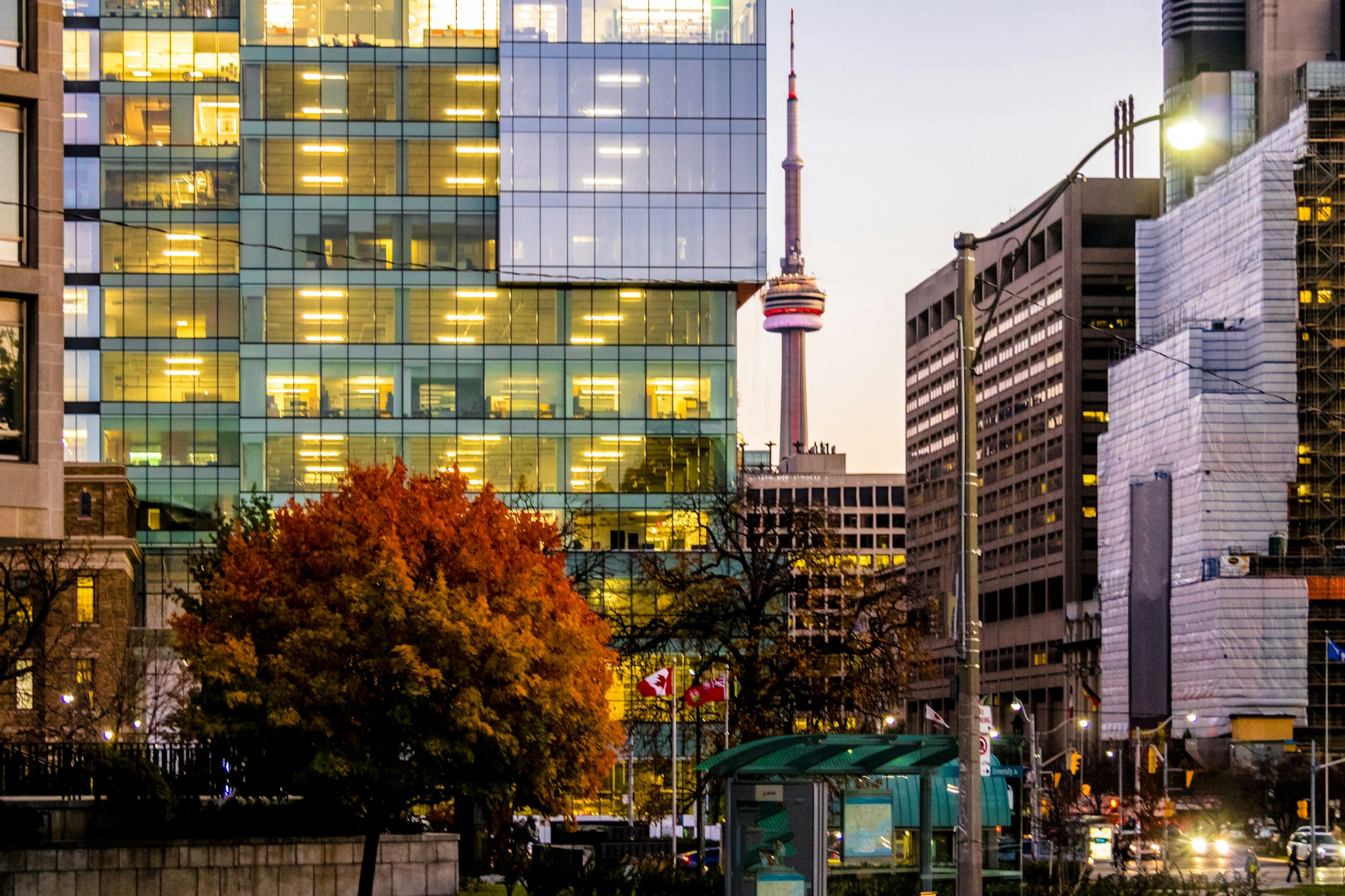
While Toronto has its strengths—such as its diverse population and economic opportunities—it struggles to establish itself as a truly world-class city. The challenges of gentrification, high living costs, limited nightlife, and insufficient public spaces contribute to a perception of boredom and lack of identity. For Toronto to rise to the status it seeks, a concerted effort is needed to address these issues and foster a vibrant, inclusive urban environment that celebrates its unique character. Only by embracing its diversity and creating spaces that encourage interaction can Toronto hope to shed the label of being boring and over-gentrified.
